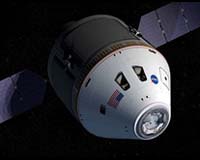 |
Mojave, Calif. (UPI) Nov 5, 2010 Aerospace designer Burt Rutan, the man behind the SpaceShipTwo spacecraft destined to take tourists to space, has announced his retirement in California. Rutan, 66, is the founder of the aerospace research firm Scaled Composites, located at the Mojave Air and Space Port in California, where he is currently chief technical officer, SPACE.com reported. Subsequent to his retirement, Rutan will assume the title of founder and chairman emeritus. Rutan has been in California's Antelope Valley for 45 years, initially first as a flight test engineer for the Air Force. In 1974 he started the Rutan Aircraft Factory to create experimental aircraft for homebuilders. In 1986 he designed the Voyager, the first aircraft to circle the world non-stop without refueling. In 2004, Rutan designed SpaceShipOne, called the world's first privately-built piloted spacecraft to reach space. The craft won the $10 million Ansari X Prize, a competition created to spur the development of affordable space tourism. "Burt is known worldwide as a legendary genius in aircraft design in the aviation world. I am very fortunate and proud to have worked by his side for the past 28 years," Scaled President Douglas Shane said in a statement.
Share This Article With Planet Earth
Related Links Rocket Science News at Space-Travel.Com
 Acceptance Testing On Second R-4D Development Engine Completed
Acceptance Testing On Second R-4D Development Engine CompletedSacramento CA (SPX) Nov 04, 2010 Aerojet, in conjunction with Lockheed Martin and NASA, successfully completed acceptance testing on the second R-4D development engine. The R-4D is the Aerojet engine that will be used on NASA's Orion crew exploration vehicle for the service module auxiliary propulsion. Eight R-4D engines, arranged in four pods of two each, will provide thrust for critical Orion maneuvers. The R-4D a ... read more |
|
| The content herein, unless otherwise known to be public domain, are Copyright 1995-2010 - SpaceDaily. AFP and UPI Wire Stories are copyright Agence France-Presse and United Press International. ESA Portal Reports are copyright European Space Agency. All NASA sourced material is public domain. Additional copyrights may apply in whole or part to other bona fide parties. Advertising does not imply endorsement,agreement or approval of any opinions, statements or information provided by SpaceDaily on any Web page published or hosted by SpaceDaily. Privacy Statement |